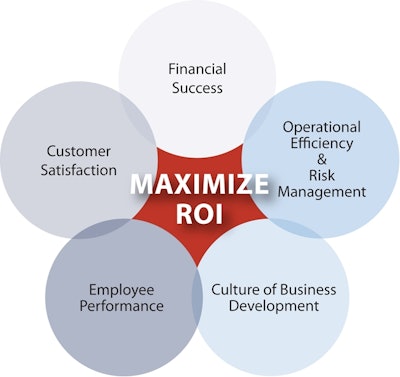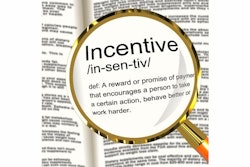
Last month, guest columnist Ken Hedlund of Somerset CPAs contributed the first in a two-part series on the topic of compensation plans and how to structure them to incentivize your employees. (To review last month’s column, visit ForConstructionPros.com/12027343.) Here’s Part 2 in the series.
In Part I of the two-part series on performance-based plans, we identified the fundamental approach to developing a corporate funding formula and introduced the concept of measuring performance. Part II will focus on explaining those identifiable and measurable attributes that correlate to positive performance.
We work with contractors in the design of performance-based plans that employ the concept of Critical Success Factors (CSFs) and Key Performance Indicators (KPIs). CSFs are those integral processes that you must absolutely get right to achieve management objectives, and ultimately success in your business. KPIs are specific activities that are measurable and, when achieved, result in desired performance to achieve CSFs. CSFs and KPIs are well-documented, time-tested and proven concepts that we have been able to successfully apply to the construction industry.
For example, KPIs for a project manager in the critical area of operations include routinely (i.e., monthly) updating costs to complete contracts to identify as early as possible project cost overruns and potential scope issues, implementing timely change orders, minimizing project profit fade, maintaining project profitability, etc. — all of which can significantly impact the bottom line. Such specific KPIs for project managers can be utilized to hold them accountable to effectively manage this aspect of their responsibility in a timely manner.
In the design of a performance-based plan, contractors should focus on five critical areas:
- Operations
- Financial
- Business development
- Employee satisfaction
- Customer satisfaction
Routinely monitoring employees’ progress toward meeting the objectives set in the performance plan in these critical areas will maximize company success measured as overall return on investment (ROI). It’s the concept of “what you can measure, you can manage.”
Flexibility and Ease of Use Required
As we indicated, performance-based plans are predominately objective. However, we will be the first to agree that there is no perfect, 100% objective plan. Plans we design always allow for some discretion and subjectivity. This allows for some flexibility.
Flexibility is necessary because it’s not always possible to assess the contributions of top performers solely through a set of objective criteria. Since these individuals are often put in charge of the most complex projects, the need to have a component of subjective analysis of their performance may be warranted. A purely performance-based plan could end up undervaluing a key employee’s overall contributions, particularly on difficult or unusual projects where certain skills may be difficult to measure. A discretionary and subjective component of the plan will allow the ability to reward an employee based on your own assessment of the value of the employee’s various contributions.
Finally, the plan must not be an administrative burden. This is one of the critical issues that often result in plan failures. The plan must be easy to routinely (typically monthly) monitor and track. Over the years, we have helped companies develop tools to streamline and efficiently and effectively administer such a plan.
If your company could benefit from introducing a performance-based incentive compensation plan, or if you are dissatisfied with your current plan’s operation, we can help. To find out more about Contractor Performance-Based Compensation Plans, be sure to contact us at [email protected].



















